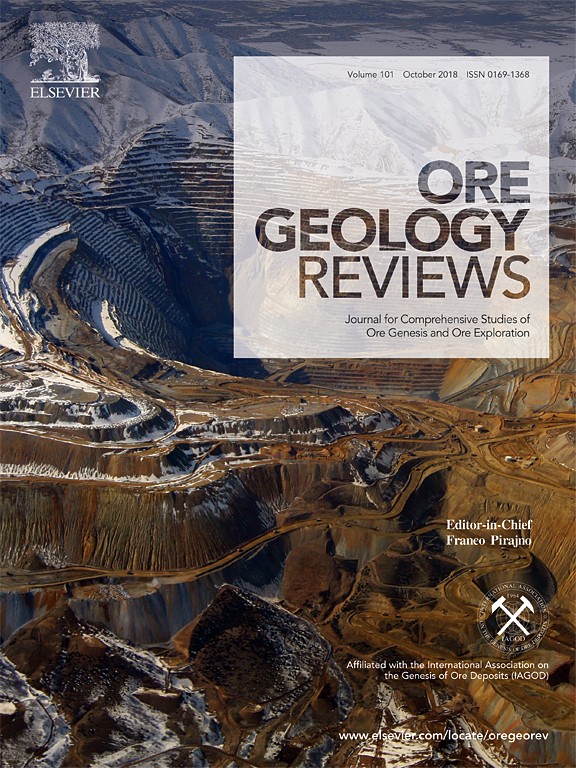
Mineralogical and geochemical features of karst bauxites from Poci
The Poci bauxite deposits in western Henan, China, are hosted in the lower member of Upper Carboniferous Benxi Formation, unconformably overlying upon the paleokarst surface of the Ordovician Majiagou Formation. The orebodies comprise a high-grade bauxite horizon (characterized by the association of diaspore-illite-anatase) and a basal iron-rich horizon (diaspore-goethite-hematite-illite-anatase), sandwiched between the overlying clayey layer (illite-diaspore-goethite-anatase) and the underlying clayey layer (illite-diaspore-microcline-goethite). Geochemical investigations reveal that Rb, Cs, Ba, Cu, Zn are depleted, while B, Ga, Bi, V, Sc, Zr, Hf, Nb, Ta, W, U and Th are enriched in bauxite horizons. B is highly enriched in bauxite ores and clays (contents 176–1061 ppm) and positively associated with SiO2, indicating B is mainly hosted in clay components, e.g. dominantly illite, which are considered a mixture of authigenic minerals transformed from kaolinites during diagenesis and unaltered detrital minerals. Mass change calculations reveal that Hf, Zr, Nb, Ta, U, Th, Sc, Cr, and Ga are stable relative to TiO2 during the bauxitization process, indicating these elements are mainly associated with anatase and diaspore. The bauxite horizons and the underlying clays are more enriched in total REE contents (ΣREEs) and display more intense LREE/HREE fractionation than the overlying clays. Provenance analysis shows that parental materials of Poci bauxites were mainly derived from felsic-dominated igneous rocks along the southern margins of the North China Craton, with minor contribution from siliciclastic sedimentary rocks and argillaceous components of underlying carbonates. A conceptual model is proposed for the formation and evolution of Poci bauxites. Uplift caused by the North Qinling orogenesis along the southwestern margin of NCC led to the formation of karstic topography, allowing aluminum-rich source materials to be transported to the low karst plain and transformed into incipient bauxites under hot and humid tropical conditions. When the platform was submerged, Fe2+ions were released from Fe/Al oxides/hydroxides under the reducing conditions associated with bacteria activity in an organic-rich environment, and redeposited as pyrites and siderites, generating a high-grade bauxite horizon and an iron-rich bauxite horizon. This marine modification resulted in further aluminum enrichment of bauxite ores.
source: https://www.sciencedirect.com